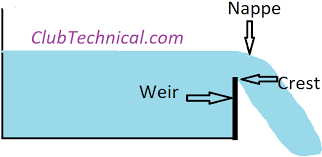FLUIDS AND THEIR PROPERTIES
FLUIDS
Fluids are substances that flow easily and take the
shape of their container. They include liquids and gases.
Examples of fluids:
- Water
- Oil
- Honey
- Molten metal
- Air
- Helium
Properties of fluids:
- Fluids are incompressible. This
means that they cannot be compressed to a smaller volume without a
significant increase in pressure.
- Fluids exert pressure in all directions. This
is known as Pascal’s law.
- Fluids flow from areas of high pressure to
areas of low pressure. This is known as Bernoulli’s principle.
Applications of fluids:
- Fluids are used in a wide variety of
applications, including:
- Transportation (cars, airplanes, boats)
- Heating and cooling (radiators, air
conditioners)
- Hydraulic systems (lifts, brakes)
- Lubrication (oil, grease)
- Medicine (blood, IV fluids)
Fluids in nature:
- Fluids are found all around us in nature. Some
examples include:
- Water in the oceans, rivers, and lakes
- Air in the atmosphere
- Lava from volcanoes
- Blood in our bodies
Fluids have several important properties,
including:
- Density: Density is the mass of
a fluid per unit volume. It is typically measured in kilograms per cubic
meter (kg/m³). The density of a fluid is affected by its temperature and
pressure. As temperature increases, density decreases. As pressure
increases, density increases.
- Viscosity: Viscosity is the
resistance of a fluid to flow. It is typically measured in pascal-seconds
(Pa·s). The viscosity of a fluid is affected by its temperature and
composition. As temperature increases, viscosity decreases. As the
concentration of solute in a liquid increases, viscosity increases.
- Surface tension: Surface
tension is the force that causes the surface of a fluid to contract. It is
typically measured in newton’s per meter (N/m). The surface tension of a
fluid is affected by its temperature and composition. As temperature
increases, surface tension decreases. As the concentration of solute in a
liquid increases, surface tension increases.
- Compressibility: Compressibility
is the ability of a fluid to be compressed. It is typically measured in
cubic meters per kilogram (m³/kg). The compressibility of a fluid is
affected by its temperature and pressure. As temperature increases,
compressibility increases. As pressure increases, compressibility
decreases.
Examples of Fluid Properties
- Density: The density of water
is 1,000 kg/m³ at room temperature and pressure. The density of air is
1.29 kg/m³ at room temperature and pressure.
- Viscosity: The viscosity of water
is 0.001 Pa·s at room temperature. The viscosity of honey is 10 Pa·s at
room temperature.
- Surface tension: The
surface tension of water is 72.8 N/m at room temperature. The surface
tension of oil is 30 N/m at room temperature.
- Compressibility: The
compressibility of water is 4.5 × 10⁻¹⁰ m³/kg at room temperature and
pressure. The compressibility of air is 1.0 × 10⁻⁶ m³/kg at room
temperature and pressure.
·
Specific Volume
·
The specific volume of a substance is
defined as the volume occupied by a unit mass of that substance. It is the
reciprocal of the density of the substance. The specific volume is an intensive
property, which means that it does not depend on the amount of substance
present.
·
The specific volume of a substance
can be expressed in various units, such as cubic meters per kilogram (m³/kg),
liters per gram (L/g), or cubic feet per pound (ft³/lb). The SI unit of
specific volume is cubic meters per kilogram (m³/kg).
·
Examples of Specific Volume
The following table
lists the specific volumes of some common substances at room temperature and
pressure:
|
Substance |
Specific Volume
(m³/kg) |
|
Water |
0.001000 |
|
Ethanol |
0.001261 |
|
Gasoline |
0.001350 |
|
Olive oil |
0.000915 |
|
Iron |
0.000071 |
|
Lead |
0.000032 |
Applications of Specific Volume
The specific volume of a substance is an important
property that is used in a variety of applications, such as:
- Determining the density of a substance
- Calculating the volume of a substance
- Designing and optimizing processes involving
the flow of fluids
- Understanding the behavior of materials under
different conditions




Comments
Post a Comment